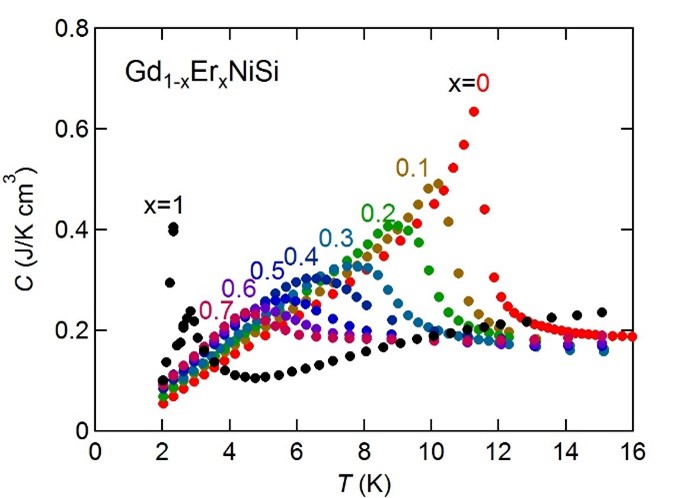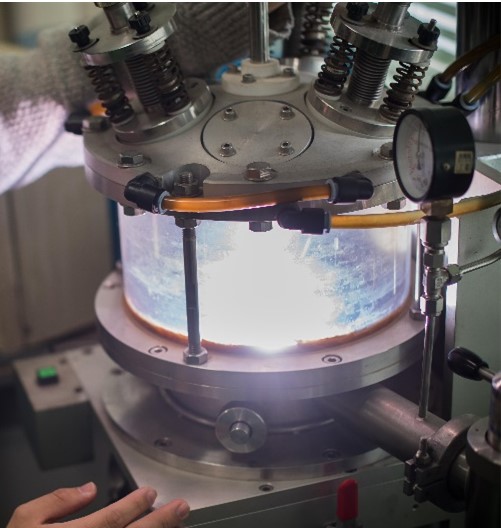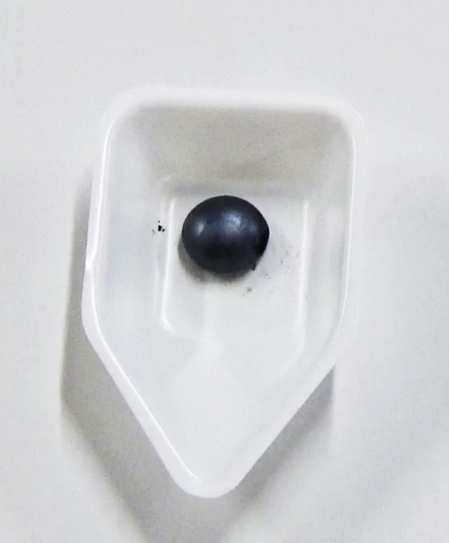Magnetic materials for the world of cryogenic temperatures
※The content is current at the time of writing.
Controlling specific heat by controlling the temperature at which the magnetic state changes
Research Overview

What temperature do you imagine when you think of low temperature? In my research theme, I am mainly searching for magnetic materials that are hard to warm up and hard to cool down (high specific heat) at very low temperatures of 10K in absolute terms, or about -263 degrees Celsius or lower. In Japan, the temperature is about -20°C at the coldest, so you can see that the temperature is quite low. Naturally, this is not a temperature at which humans can live. Where are such low temperatures used? MRIs use refrigerators to operate superconducting magnets. In the field of space exploration, cryocoolers are necessary to improve the sensitivity of infrared detection. In this refrigerator, a material with a high specific heat called cryogenic storage is used to maintain low temperatures. To increase the freezing capacity of the refrigerator, it is necessary to increase the specific heat of the coolant below 10 K. I am researching a new magnetic material to be used as the coolant.
Research Features
When we think of magnetic materials, magnets are the first thing that come to mind, but the magnetic materials in this theme are completely different. The point of this research is to determine at what temperature the specific heat of magnetic materials can be increased. Since the specific heat increases at the temperature at which the magnetic state of magnetic materials changes (magnetic phase transition temperature), it is necessary to control the magnetic phase transition temperature below 10K. Magnets also have a magnetic phase transition temperature, but it is several hundred degrees Celsius. On the other hand, this theme requires a magnetic phase transition temperature as low as about -260°C. We will identify compounds that may have a magnetic phase transition temperature at low temperatures, actually fabricate them, and measure their specific heat. Then, we will clarify why the physical properties are manifested.

As the amount of Er substitution x is increased, the temperature at which the peak is shown
Move to lower temperature side than 10 K.
In preparing samples, we are mainly dealing with metals, which in many cases must be melted at temperatures of 1,000°C or higher. The samples are prepared by melting metals in an arc melting furnace, as shown in the figure, which can generate temperatures of over 2,000°C. The students in the laboratory also prepare samples based on their own themes in an arc melting furnace. Each student in the laboratory also prepares samples for his or her own theme using an arc melting furnace, etc., and clarifies the specific heat of the sample.
Research Attraction
The fascination is to actually fabricate the material with your own hands and to reveal its physical properties. In most cases, preparing the sample is the most difficult part. The amount of raw materials to be prepared, the temperature, and various other conditions are changed to prepare the sample. After preparation, we check to see if the desired compound has been obtained. Once the compound has been prepared, we finally measure its physical properties, such as specific heat. I am very excited during the measurement because I am the first person in the world to know the physical properties of the material. If we do not have measurement equipment on campus, I sometimes go with students to an off-campus facility to conduct experiments. It is also very attractive to gain knowledge about new magnetic materials together with students.
Future Outlook
Based on the findings of our research to date, we will continue to search for new compounds and alloys that exhibit greater specific heat than materials in practical use. Ultimately, we hope to implement them in refrigeration equipment so that they can be used in space development and medical refrigeration. To this end, we will also conduct basic research for implementation. We would like to cooperate with companies to bring new magnetic materials to the world.
Message to those who are interested in this research
In my research, I use knowledge of mathematics, physics, and engineering that students learn in high school and college. Some students create analysis programs in the course of their research, so I hope they will be interested in and work on a variety of things. Also, I think you will understand how difficult and interesting it is when you actually try hands-on experiments. I believe that students do not have many opportunities to experience low-temperature experiments, so I encourage you to give it a try.



